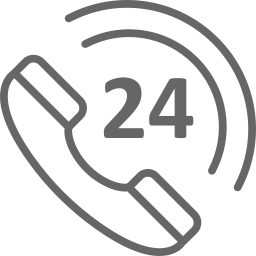Table of Contents
Introduction
Analysis of transactions
Conclusion
Bibliography
Income tax is a central theme when considering the revenue generation system within the federal government in Australia. Resident individuals are taxed at progressive rates, which are referred to as the marginal tax rate, while companies and business entities are taxed at fixed rates based on the turnovers. The Australian Taxation Office is the authority responsible for collection and operates primarily based on two major statutes namely the Income Tax Assessment Act of 1936 and 1997. Furthermore, Taxation Rulings are also considered as legal provisions that individuals and corporations must abide by to ensure compliance with the taxation system in the country. The current study analyses a set of transactions entered into by Anna and her employer XYZ, both of which fulfil the residency requirements for taxation purposes to determine the impact of the transactions on their taxable incomes respectively.
Anna is widely considered to be one of the best tax accountants in the city of Melbourne. Naturally, the accountancy firm XYZ is depicted as keen to recruit Anna and enhance its customer base. The first transaction involves XYZ offering Anna a lump sum of $300,000 as a means to encourage her to join the company along with an annual salary package of $200,000. Anna accepts the offer and commences her employment contract from the 1st of July, 2018. Both the amounts would be treated as ordinary income related to the aspect of employment for Anna in the context of her recruitment at XYZ. Naturally, the tax liability would be imposed following her marginal tax rate and the amounts would be taxable on the year they were received. Ordinary income relates to all the amounts earned in the form of money that is derived from ordinary sources or concepts. Covered under Section 6.5 in the Income Tax Assessment Act of 1997, ordinary income is usually comprised of three major sources. 1
The most prominent source and the one that is relevant in the case of Anna is the amount derived from personal exertion and includes salaries, wages, lump-sum payments from the employer, and others. Other incomes derived from ordinary concepts include the income generated from a business activity or the income generated from the property including rents and dividends. Since
Anna received the $200,000 as her annual salary package, it would come under the purview of an ordinary income in terms of salaries and wages. Similarly, the $300,000 received as a lump sum would also be deemed to be an income derived from ordinary sources considering its nexus to her employment at XYZ. The rate of taxation would be equal to the marginal tax rate for Anna based upon her cumulative incomes along with the aforementioned ordinary incomes linked to her employment.
The nexus as an important requisite for determining the status of the income or the expense in terms of ordinary or a statutory income has been established in several cases over the years. One of the most prominent case laws in this regard has been the matter of “W Neville &Co v FCT (1937)”, where the key fundamentals behind the establishment of a nexus were identified as the income being incidental and relevant.2 Another important case law in this regard relates to the judgment passed in the matter of “Sun Newspapers Ltd and Associated Newspapers Ltd v FCT (1938)” where the nature of the income and the operations that led to the income were held as the fundamental aspect that led to the determination of the income and its nature.3 Taxable income can be classified into two major types including statutory income and ordinary income. Considering how the amounts received by Anna from XYZ were for employment purposes following the provisions as well as the aforementioned case laws, they would come under her assessable income for the period of 2018-2019 since she commenced her employment contract on the 1st of July, 2018.
Similarly, the amounts would be considered as deductible expenses for XYZ firm as they were spent towards the business. In terms of allowing the deductions of expenses for businesses, three golden rules are predominantly relied upon. The foremost among them relate to that the amount spent must not have been for private use or towards private benefits within a business setting. Subsequently, expenses that involve amounts for both business as well as private uses, only the portion that is used for the business function is deductible. Lastly, every business transaction claimed as a deduction would have to be backed by records. Another area of consideration for
XYZ in this regard would have to be the timing when they could claim the expense as a deduction for their taxable income. Expenses are classified into two categories within the Australian taxation system, with one being an operating expense and another being a capital expense. Capital expenses typically include the expenditures related to machinery or equipment and operating expenses relating to wages and salaries. Considering how the payments for Anna amounting to $200,000 as her annual salary package and the $300,000 lump sum payment as a token for her to join XYZ were essentially operating expenses and did not involve any machinery or equipment, XYZ would be able to adjust the expenses as deductions the year they incur them.
The second transaction takes place when Anna registers for the Elite Tax Professional's Examination that was newly introduced by the CPA. She spends $1000 as the registration fees along with an examination fee of $5000. She passes the exam without much difficulty. XYZ acknowledges her stellar performance and decides to pay an extra amount of $10000 to Anna, which was annotated as $1000, $5000, and $4000. Considering how the Elite Tax Professional exam by the CPA related to Anna's profession and she paid the money upfront, she could claim a deduction for self-education expenses amounting to $250. This is in accordance with the provisions contained in Section 82A of the Income Tax Assessment Act 1936 and the directives enforced by Taxation Ruling 98/9.4 Therefore, when calculating her taxable income, Anna would only have to show an amount of $5750 after adjusting the $250 expenses for self-education. The $250 would not have been allowed for a deductible offset had the course did not relate to Anna's profession in a specific manner or would have allowed Anna for an entirely different line of employment.
Subsequently, the $10000 paid by XYZ would be considered as an ordinary expense or an operating expense that was spent towards retaining Anna as an employee within the organization. Naturally, it would have to be adjusted against capital or ordinary receipts that XYZ manager to generate through the normal course of its business activities. It is important to note that if Anna had considered the $10,000 as a reimbursement for her Elite Tax Professional exam fees, she would not have been able to claim for the $250 self-education offset. However, she instead, decides to spend the $10,000 for a safari trip to South Africa. The $10000 would be depicted as an ordinary expense for Anna and would have to be adjusted against her income for the financial year 2018-2019. Important case law in this regard relates to the judgment passed in the matter of “Commissioner of Taxation v Anstis (2010)”, where the deductibility of self expenses for educational purposes was established based on the course or the curriculum is relevant to the profession of the taxpayer.5 Several ancillary expenses were also established within the judgment that contributes to the overall amount spent on the self-education deduction. These included the travel between the taxpayer’s residence and the educational institution or the workplace during the examination.
Section 8.1 of the Income Tax Assessment Act 1997 also allows for claims relating to self-education expenses following along the lines of Section 82A of the Income Tax Assessment Act 1936, whereby a course that bears relevance and connection to the taxpayer's profession would be eligible for the deduction.6 Section 23 of the Taxation Ruling 98/9 also allows for five major expenses that contribute towards the cumulative sum spent on the educational expense offset.7 The foremost among them relate to the course of the tuition fees for attending the course. Furthermore, costs relating to professional or trade journals, textbooks and stationery are also allowed towards the $250 offset. Other expenses include the airfares relating to the exam, accommodation or meal expenses if the taxpayer is required to stay away from his or her residence and the interest if the taxpayer borrowed money to fund the self-education expenses.
The next transaction takes place when Anna decides to spend the $10000 received from her employer XYZ to visit South Africa for a Safari. While it has been established that this would be treated as an ordinary expense, she witnesses that several Australians face difficulties when visiting South Africa and decides to report back to her employer and suggests a partnership with SA Safari to contract a partnership as it was the best travel agent within the country. Consequently, XYZ enters into a contract with SA Safari in February 2019, whereby 300 Australians were stipulated to take the safari between March 2019 and August 2019 with the monthly visitor count being 50. The tourist package was to be charged at $10000 and the profits were to be shared equally between XYZ and SA Safari. However, XYZ finds that the firm is losing a number of its high net worth clients and decides to introduce the travel scheme to its high net worth clientele.
The cost per customer for XYZ stands at about $1000 and the first 300 of the 500 clients that enrolled for the scheme are chosen for the safari on a first-come-first-served basis. Considering how the contract was settled between SA Safari and XYZ whereby the visits would start from March to August, XYZ would have to account for the expense of $1000 per customer for the 250 customers that take the safari from March to July as the reporting period within Australia lasts from June to July. This would bring the amount of taxable expense for the year 2019 to $250,000 while the remaining $50000 would have to be accounted for in the following year. Considering how the nexus would exist in terms of the expense relating directly to maintaining the clients for XYZ, the expense would be treated as an ordinary expense and the same would have to be adjusted against the income generated by the firm during the year.
Another important aspect that must be considered in this regard relates to when the amount is incurred. Any deduction in terms of an expense must be incurred before claiming a deduction. The deduction is largely dependent on the timing of the cost as to when it was incurred. However, it must be stated that no statutory definition of the term 'incurred' exists in both the Income Tax Assessment Acts of 1937 and 1997. Naturally, precedents and established case laws must be relied upon in terms of identifying the essence of the term incurred when determining the tax consequences of an expense. The key fundamental as established in several cases including “Griffin Coal Mining Company Ltd v FC of T (1989)” relates to how no legal liability exists within the expenditure.8 The legal liability has been classified into two categories, with the first being a definite commitment within a reporting period to the loss or the outgoing and the second being that no specific event leads to the liability.
Additionally, it is also important to distinguish between the concepts of a loss and an outgoing expenditure. The judgement passed in the matter of “FC of T v Ilbery (1981)” established that outgoings were a voluntary action and deliberately engaged in by the taxpayer.9 Naturally, the cost amounting to $250000 for the current year and the $50000 for the next year for XYZ would be considered as outgoing expenditures since they were voluntary by essence and deliberately engaged in by the taxpayer resident company to retain their high net, worth clients. Similarly, the judgement passed in the matter of “Charles Moore v FCT (1956)” established that losses were fundamentally involuntary by nature.10 The key fundamental within the facts of the case related to the taxpayer claiming for deductions for losses that primarily arose from embezzlement of funds, or business activities that would be considered beyond the scope of legality in terms of the transaction. The term incurred was also further explained in the judgement passed in the matter of “Commonwealth Aluminium Corporation Ltd v FC of T (1977)” as it put forward that liability would be considered as a loss or an outgoing within the meaning of Section 8.1 of the Income Tax Assessment Act 1997 if the taxpayer has completely subjected towards the liability.11
The concept of a limb is also important within the determination of the nature of the expense or the outgoing, especially since it has been categorized into positive and negative limbs. Positive limbs that determine the nature of the transaction include many phrases such as incurred, to the extent that, gaining or producing, necessarily incurred for and sufficient connection. Subsequently, the negative limbs include capital or of capital nature, private or domestic nature, incurred towards gaining an income that is statutorily exempt and limitations involved within deductions.
In conclusion, it could be stated that the underlying connotations within the transaction are the key aspects that determine the nature of the tax consequence for the taxpayer. While the first requirement relates to the fulfilment of the residency requirements, the next requirement relates
to the nature of the transaction in terms of its derivation from ordinary concepts of capital concepts. Both incomes and expenses are treated similarly in this regard. Several deductions and offsets were also discussed in this regard, which related to how taxable exemptions were allowed for resident taxpayers based on the transactional nature.
Statutes
"INCOME TAX ASSESSMENT ACT 1936 - SECT 82A Deductions For Expenses Of Self-Education", Classic.Austlii.Edu.Au (Webpage, 2020) <http://classic.austlii.edu.au/au/legis/cth/consol_act/itaa1936240/s82a.html>
"INCOME TAX ASSESSMENT ACT 1997 - SECT 6.5Income According To Ordinary Concepts (Ordinary Income)", Classic.Austlii.Edu.Au (Webpage, 2020) <http://classic.austlii.edu.au/au/legis/cth/consol_act/itaa1997240/s6.5.html>
INCOME TAX ASSESSMENT ACT 1997 - SECT 8.1 General deductions, Classic.Austlii.Edu.Au (Webpage, 2020) <http://classic.austlii.edu.au/au/legis/cth/consol_act/itaa1997240/s8.1.html>
Governmental publications
"Legal Database", Ato.Gov.Au (Webpage, 2020) <https://www.ato.gov.au/law/view/document?DocID=TXR/TR989/NAT/ATO/00001&PiT=99991231235958>
Case laws
"CCH Iknow | Australian Tax & Accounting", Iknow.Cch.Com.Au (Webpage, 2020) <https://iknow.cch.com.au/document/atagUio2649767sl683581894/w-nevill-co-ltd-vfederal-commissioner-of-taxation-high-court-of-australia-03-march-1937>
"CCH Iknow | Australian Tax & Accounting", Iknow.Cch.Com.Au (Webpage, 2020) <https://iknow.cch.com.au/document/atagUio2653383sl686625545/associated-newspapers-ltd-v-federal-commissioner-of-taxation-sun-newspapers-ltd-v-federal-commissioner-of-taxation>
"CCH Iknow | Australian Tax & Accounting", Iknow.Cch.Com.Au (Webpage, 2020) <https://iknow.cch.com.au/document/atagUio552546sl16869820/commonwealth-aluminium-corporation-limited-v-federal-commissioner-of-taxation>
"CCH Iknow | Australian Tax & Accounting", Iknow.Cch.Com.Au (Webpage, 2020) <https://iknow.cch.com.au/document/atagUio544565sl16791276/the-griffin-coal-mining-company-limited-v-federal-commissioner-of-taxation>
"CCH Iknow | Australian Tax & Accounting", Iknow.Cch.Com.Au (Webpage, 2020) <https://iknow.cch.com.au/document/atagUio2675974sl704005066/charles-moore-co-w-a-pty-ltd-v-federal-commissioner-of-taxation>
"Commissioner Of Taxation V Anstis", Eresources.Hcourt.Gov.Au (Webpage, 2020) <http://eresources.hcourt.gov.au/showCase/2010/HCA/40>
"Legal Database", Ato.Gov.Au (Webpage, 2020) <https://www.ato.gov.au/law/view/document?DocID=ITR/IT2684/NAT/ATO/00001&PiT=99991231235958>
Remember, at the center of any academic work, lies clarity and evidence. Should you need further assistance, do look up to our Taxation Law Assignment Help

Get 24x7 instant assistance whenever you need.

Get affordable prices for your every assignment.

Assure you to deliver the assignment before the deadline

Get Plagiarism and AI content free Assignment

Get direct communication with experts immediately.
Secure Your Assignments
Just $10
Pay the rest on delivery*

It's Time To Find The Right Expert to Prepare Your Assignment!
Do not let assignment submission deadlines stress you out. Explore our professional assignment writing services with competitive rates today!
Secure Your Assignment!